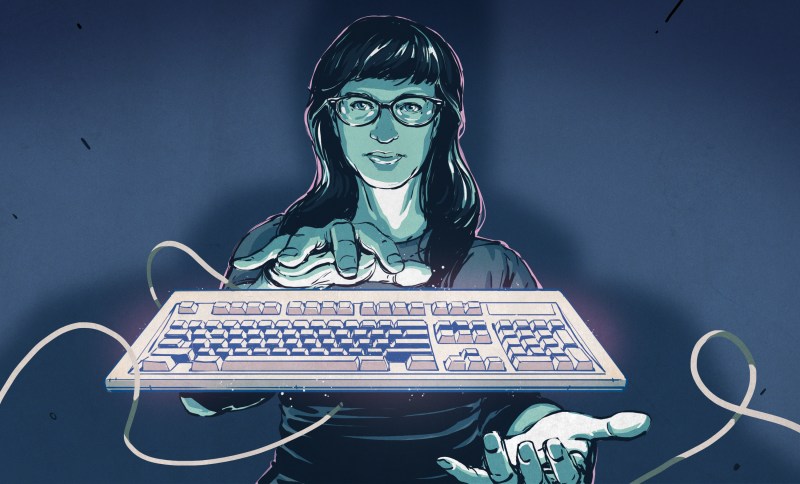
Aerodox Flies on Wireless Wings
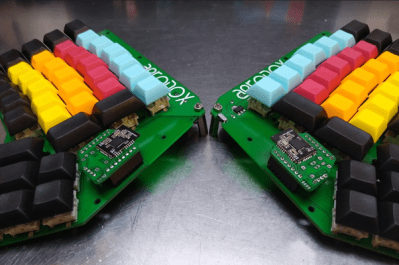 [Simon Merrett] didn’t know anything about keyboards when he started this project, but he didn’t let that stop him. [Simon] did what any of us would do — figure out what you like, learn enough to be dangerous, and then start fiddling around, taking all that inspiration and making a mashup of influences that suits your needs.
[Simon Merrett] didn’t know anything about keyboards when he started this project, but he didn’t let that stop him. [Simon] did what any of us would do — figure out what you like, learn enough to be dangerous, and then start fiddling around, taking all that inspiration and making a mashup of influences that suits your needs.
The Aerodox design became a cross between the ErgoDox‘s key layout and the logic and communication of the Redox Wireless, itself a reduced-size version of the ErgoDox. Interestingly, [Simon] chose the ErgoDox’s dimensions and spacing, and not those of the Redox. Like a lot of people out there, I found the ErgoDox to be too big for my hands, mostly in that the thumb cluster is too far away from the mainland. It’s nice to see that it suits some people, though.
[Simon] worked up a custom hot-swap footprint that makes the board reversible, much like the ErgoDox. Each half has an NRF51822 for a brain, and there’s a third one that acts as a receiver. This external NRF board is connected over UART to an Arduino Pro Micro, which acts as the USB HID and runs QMK. It’s an interesting journey for sure, so go dig into the logs.
An Everything Keyboard Vendor Database
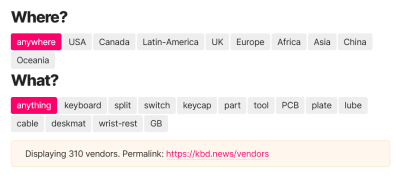
Are you yearning to find that 60% keyboard from that one group buy a few years ago, but they always go too fast on r/mechmarket? Or what about that discontinued desk pad, or the perfect switch puller?
Keyboard or keyboard accessory, whatever you’re looking for — it may be available from one of the 300+ vendors around the world that are currently listed with The Keyboard Builders’ Digest’s vendor database.
Maybe you spent the bulk of 2020 getting into custom cable making, and you’d like to clear out some of the inventory that’s piling up around your desk. It’s free to get listed in this database no matter how big or small your shop may be. And, coming soon — the more complete your vendor profile, the higher your vendor score (out of 10) will be. It’s all there in the FAQ.
The Stack Overflow Macropad Is Now a Real Thing
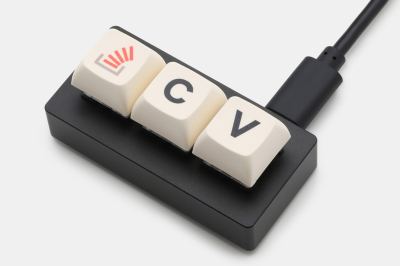
Remember this April Fool’s prank from Stack Overflow? Content Overlord Ben Popper told users they would no longer be able to copy and paste code from the site unless they bought the Key — a tiny, dedicated macropad that unlocks the mono-spaced goods.
When enough people want your fake product, you might as well find a way to produce it. Stack Overflow teamed up with Drop and keyboard connoisseur [Cassidy Williams] to make this happen. According to an update on the blog post, the original production line of these sold out in six hours.
It’s only $29, and some of the proceeds from each sale are going to digitalundivided, a non-profit that helps Black and Latinx women succeed as entrepreneurs in the technology space. We love it when April Fool’s Day gags become real, especially when they do some good on the side.
Historical Clackers: the Hammond 1 Typewriter
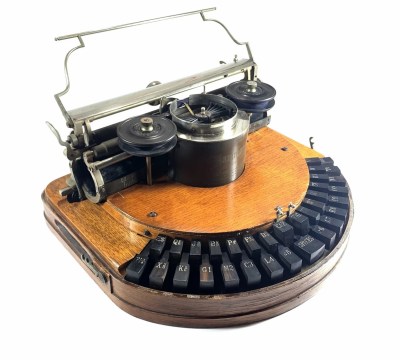
Even though the keys resemble the layout of a piano, this is not the same Hammond as the company that makes organs. This Hammond was the third typewriter to market after the Remington and the Caligraph, though it might have been first if not for some setbacks that delayed its release until 1884.
Not only is this typewriter eye-catching, it has a few features that make it stand out from the QWERTY machines. The most obvious one is the curved keyboard of solid ebony keys. Instead of type bars, the Hammond I has a type shuttle made of two curved pieces, one for each half of the keyboard. The shuttle could be easily traded out for another typeface, font size, or language, which paved the way for a Braille shuttle and lots of Hammond typewriters to be distributed to children in need at schools for the blind.
Less obvious is the way the thing actually operated. When a key is struck, the type shuttle swings around to present the correct letter. A spring-loaded hammer smacks the paper from behind, pushing it against the shuttle. No matter how hard or softly the typist tickled the ebonies, that hammer ensured consistent force with every letter, which gave Hammond the edge when it came to printing clear impressions onto paper.
Hammond typewriters were manufactured until about 1920. The original Hammond I came in oak, mahogany, or cherry, and the keys only came in solid ebony. It sold for $100, which was more than a horse-drawn carriage cost at the time. Would you spend more on your keyboard than your car?
Historical Bonus: This Old Switch
 I bought a pair of these vintage Cherries from an ebay vendor who has a bunch of loose switches for sale. They are allegedly among the first mechanical keyboard switches, if not the very first.
I bought a pair of these vintage Cherries from an ebay vendor who has a bunch of loose switches for sale. They are allegedly among the first mechanical keyboard switches, if not the very first.
Although there is no identifier other than Cherry and the electrical rating on the switch, these are widely known as model 01APBSW from 1959, although they are probably some form of S-31s. There’s a bit more info on Deskthority, including a side-view picture of a Computer Communications 303 keyboard full of similar switches.
I really like these switches. For one thing, they look like little Morse keyers or tiny mousetraps. They feel nice, too — a linear travel with a tiny bit of tactility on actuation. I want to make a whole keyboard out of them, or at least use one of them to replace the now-silent switch in my new-old triple foot pedal.
The two switches I have sound slightly different from each other. Below is a sample of the lower-pitched switch. It sounds nicer, in my opinion. The tones don’t quite come across on my microphone, but they have a music box twinkle to them. This video captures the sound quite well.
ICYMI: r0tring CS-50 Restoration
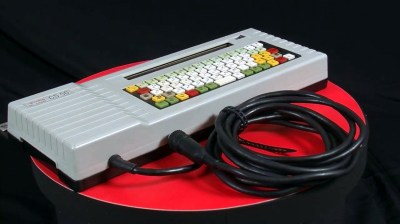 If you’ve ever had to do any ISO lettering on a technical drawing, you know how tedious it is whether you use a stencil or freehand it. However there is another way, and it’s called a scriber.
If you’ve ever had to do any ISO lettering on a technical drawing, you know how tedious it is whether you use a stencil or freehand it. However there is another way, and it’s called a scriber.
Basically, you type on the keyboard, confirm input on the screen, and then it writes the lettering for you using a fine drawing pen in the holder. It’s a portable penmanship plotter, and [Atkelar] brought one back from the brink of death by replacing one of the motor driver chips. Be sure to check out the video to see how [Atkelar] was able to rebuild a broken screw boss using adhesives and common household items.
Got a hot tip that has like, anything to do with keyboards? Help me out by sending in a link or two. Don’t want all the Hackaday scribes to see it? Feel free to email me directly.
No comments:
Post a Comment